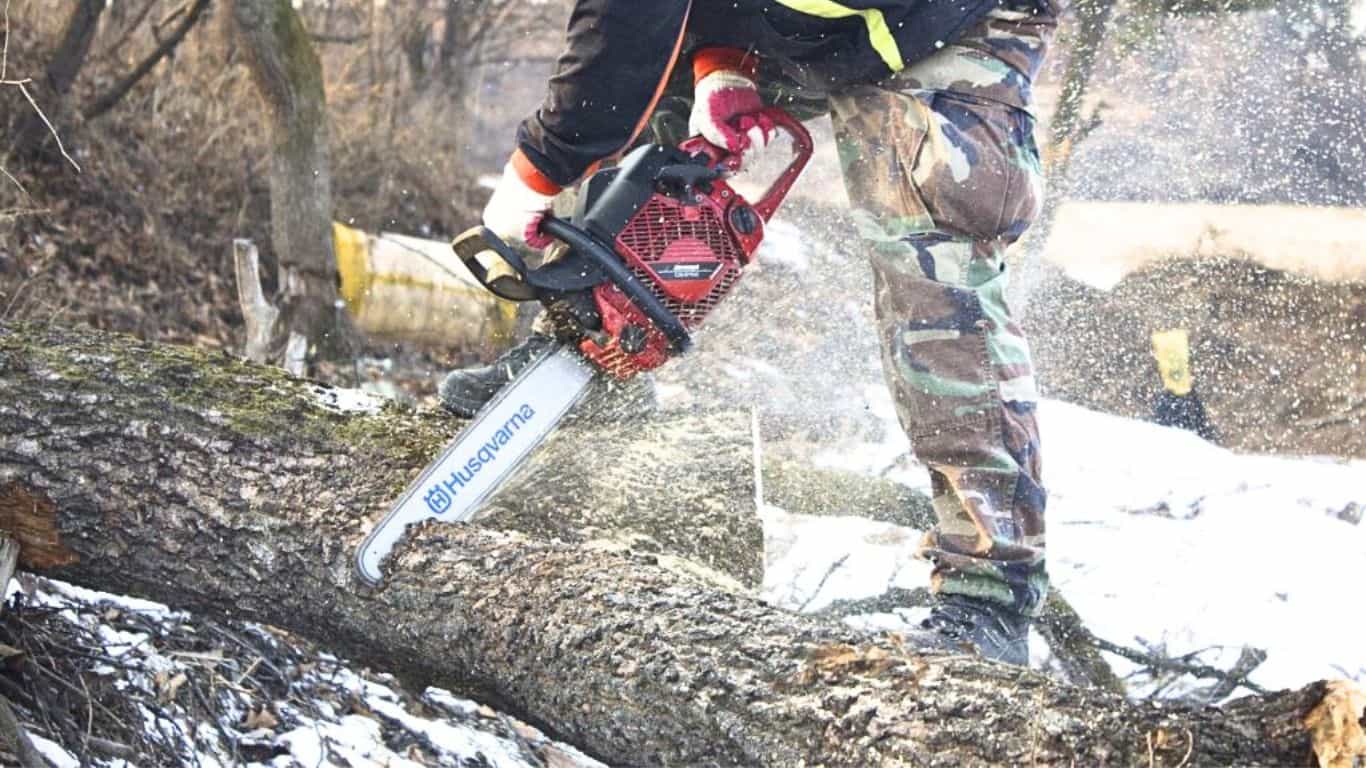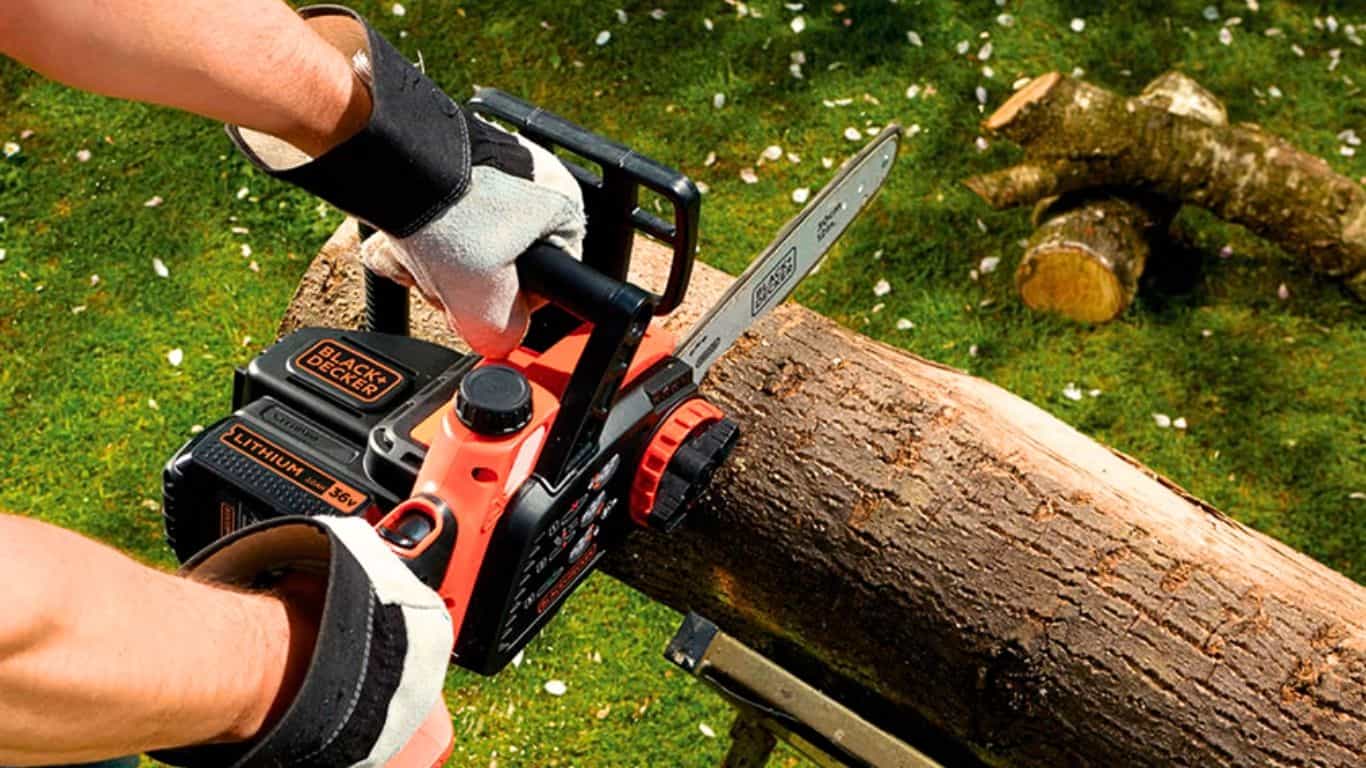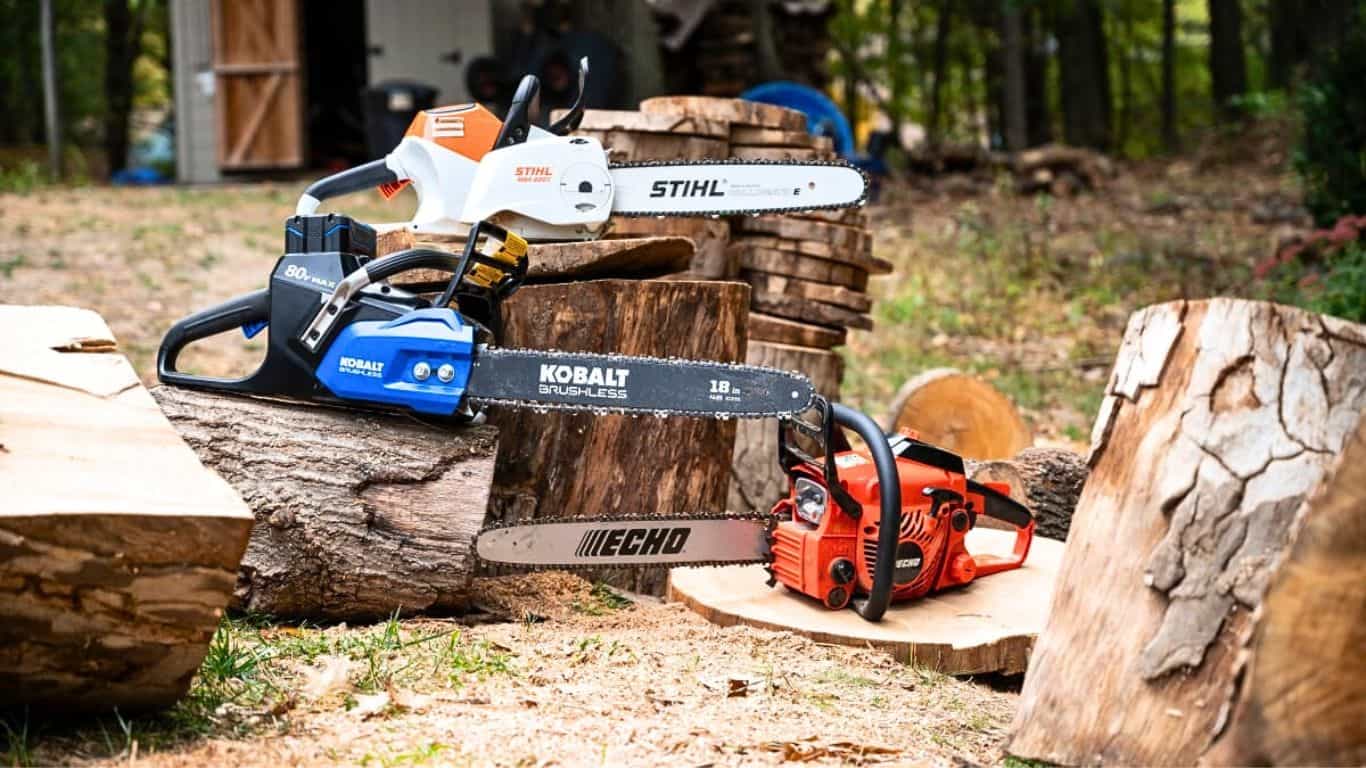Using a chainsaw to cut wood is a common task for homeowners, DIY enthusiasts, and professionals alike. However, when it comes to cutting wet wood with a chainsaw, there are some important factors to consider. In this article, we will explore the feasibility and safety of cutting wet wood with a chainsaw, discuss the best types of saws for this task, and provide useful tips for chainsaw operation in various conditions.
Can You Chainsaw Wet Wood?
Yes, it is possible to chainsaw wet wood, but there are some important factors to consider. Cutting wet wood with a chainsaw poses several challenges due to its increased density and moisture content. Wet wood is heavier and denser than dry wood, which can cause the chainsaw to work harder and result in a slower cutting speed. Additionally, wet wood can dull a chainsaw’s chain more quickly, leading to increased maintenance and sharpening requirements.

When chainsawing wet wood, it is important to use caution and follow these guidelines:
- Choose the right chainsaw: Opt for a chainsaw with sufficient power to handle the increased resistance of wet wood. Gas-powered chainsaws with higher horsepower ratings are generally better suited for this task than electric chainsaws.
- Consider the chain and bar: Look for a chain and bar specifically designed for cutting wet wood. These chains typically have special coatings or features that enhance their performance in damp conditions.
- Maintain chain tension: Wet wood can cause the chain to loosen more quickly, so regularly check and adjust the chain tension to ensure safe and efficient cutting.
- Be aware of safety risks: Operating a chainsaw in wet conditions can increase the risk of slipping, reduced visibility, and potential electrical shock if using an electric chainsaw. Take extra precautions, wear appropriate safety gear, maintain a firm grip on the chainsaw, and exercise caution to avoid accidents.
- Sharpen the chain frequently: Wet wood can accelerate chain dulling. Keep the chain sharp by sharpening it more frequently than when cutting dry wood. A sharp chain ensures cleaner cuts and reduces strain on the chainsaw.
- Be prepared for maintenance: Cutting wet wood may require more frequent maintenance, including cleaning and lubricating the chainsaw. Moisture can promote rust
and corrosion so takes proper care of the chainsaw to prolong its lifespan.
While cutting wet wood with a chainsaw is possible, it is generally recommended to wait for the wood to dry before processing it. Dry wood is lighter, easier to cut, and causes less strain on the chainsaw. However, if you must chainsaw wet wood, following the guidelines mentioned above will help ensure safer and more efficient operation.
Can You Use an Electric Chainsaw on Wet Wood?
Using an electric chainsaw on wet wood presents additional concerns. Electric chainsaws are typically less powerful than their gas-powered counterparts, and the added resistance from wet wood can strain the motor, potentially leading to overheating or even motor failure.
Moreover, water and electricity do not mix well, and operating an electric chainsaw in wet conditions poses a safety risk due to the increased potential for electrical shock. It is generally advisable to use a gas-powered chainsaw when working with wet wood.

Best Saw for Cutting Wet Wood
When it comes to cutting wet wood, selecting the right saw can make a significant difference in performance and safety. Here are a few types of saws that are well-suited for cutting wet wood:
Gas-powered chainsaws
Gas-powered chainsaws are generally considered the best option for cutting wet wood. They offer higher horsepower and cutting speed compared to electric chainsaws, making them more effective at handling the increased density and resistance of wet wood. Gas-powered chainsaws also tend to have longer bars, allowing for easier cutting through larger wet logs.
All-weather chainsaws
Some chainsaw models are specifically designed for all-weather use, including cutting wet wood. These chainsaws often feature special coatings or treatments on the chain and bar to resist corrosion and reduce friction. They may also have enhanced water resistance and additional features to improve performance in damp conditions.
Professional-grade chainsaws
Professional-grade chainsaws are typically built to handle demanding tasks, including cutting wet wood. They are designed with more powerful engines, durable construction, and advanced features for increased performance and longevity. These chainsaws are often the preferred choice for professionals who regularly work with wet or challenging wood conditions.

Chainsaws with anti-corrosion features
Wet wood can promote rust and corrosion, so selecting a chainsaw with anti-corrosion measures can help prolong the tool’s lifespan. Look for chainsaws that have chains or bars with protective coatings, such as chrome or nickel plating, to resist moisture and prevent corrosion.
High-torque chainsaws
Wet wood requires more power to cut through efficiently. Chainsaws with high torque output are ideal for tackling wet wood as they provide the necessary force to make smoother and faster cuts.
When choosing a saw for cutting wet wood, consider factors such as engine power, chain and bar design, anti-corrosion features, and overall durability. It’s also essential to follow the manufacturer’s recommendations and guidelines for using the chainsaw in wet conditions to ensure safe and effective operation.
Can You Cut Dry Wood with a Chainsaw?
Chainsaws are highly effective tools for cutting dry wood. In fact, cutting dry wood is often the preferred scenario for chainsaw operation. Here are a few reasons why chainsaws are well-suited for cutting dry wood:
Efficiency
Dry wood is lighter and less dense compared to wet wood, making it easier to cut. Chainsaws can quickly and efficiently slice through dry wood, allowing for faster and more precise cuts.
Power and Speed
Chainsaws are designed to handle a variety of wood types, including dry wood. With their powerful engines and sharp chains, they can easily penetrate and cut through dry wood with minimal effort and increased cutting speed.

Cleaner Cuts
Dry wood presents fewer challenges compared to wet wood, resulting in cleaner and smoother cuts. The chainsaw’s sharp chain (best chainsaw chains), combined with the proper technique, can create precise cuts on dry wood, making it ideal for construction, firewood, and other woodworking projects.
Reduced Maintenance
When cutting dry wood, the chainsaw’s chain is less prone to dulling compared to cutting wet wood. This means that less frequent chain sharpening and maintenance are required, allowing for more uninterrupted work time.
Lower Strain on the Chainsaw
Dry wood poses less resistance when cutting, reducing the strain on the chainsaw’s engine. This results in less wear and tear on the tool, prolonging its lifespan and reducing the need for frequent repairs or replacements.
While chainsaws are suitable for cutting dry wood, it’s important to follow proper safety practices. Wear appropriate safety gear, including protective eyewear, gloves, hearing protection, and sturdy footwear. Always use the chainsaw with caution and ensure that you are familiar with its operation and safety features.
Can You Chainsaw in the Rain?
Operating a chainsaw in the rain is generally not recommended due to safety concerns. Wet conditions increase the risk of slipping, reduced visibility, and electrical shock if using an electric chainsaw. Moisture can also affect the chainsaw’s performance and potentially lead to water damage. If you must work in wet conditions, take necessary precautions such as wearing appropriate protective gear, maintaining a firm grip on the chainsaw, and being extra cautious to avoid accidents.

Chainsaw Tips for Beginners
If you are new to using a chainsaw, whether cutting wet or dry wood, here are a few essential tips to keep in mind:
- Safety first
Always wear appropriate safety gear, including protective eyewear, gloves, hearing protection, and sturdy footwear. Follow proper chainsaw handling techniques to minimize the risk of accidents.
- Regular maintenance
Keep your chainsaw well-maintained, including routine cleaning, chain sharpening, and lubrication. A well-maintained chainsaw performs better and lasts longer.
- Proper technique
Learn and practice correct cutting techniques, such as maintaining a stable stance, using the full length of the chainsaw bar, and avoiding excessive force. The proper technique reduces fatigue and improves cutting efficiency.
- Seek professional help if needed
If you’re unsure about handling a chainsaw or tackling a specific task, it’s better to consult or hire a professional with the necessary expertise.
Can You Cut Wet Wood With a Chainsaw – FAQs
Conclusion
While it is possible to cut wet wood with a chainsaw, it is generally not recommended due to the increased strain on the chainsaw, decreased efficiency, and potential safety hazards. If you must work with wet wood, choose a chainsaw with sufficient power and features designed for damp conditions.
However, for optimal performance and ease of operation, it is advisable to cut dry wood whenever possible. Remember to prioritize safety, follow proper chainsaw maintenance practices, and always exercise caution when operating a chainsaw, especially in challenging weather conditions.




